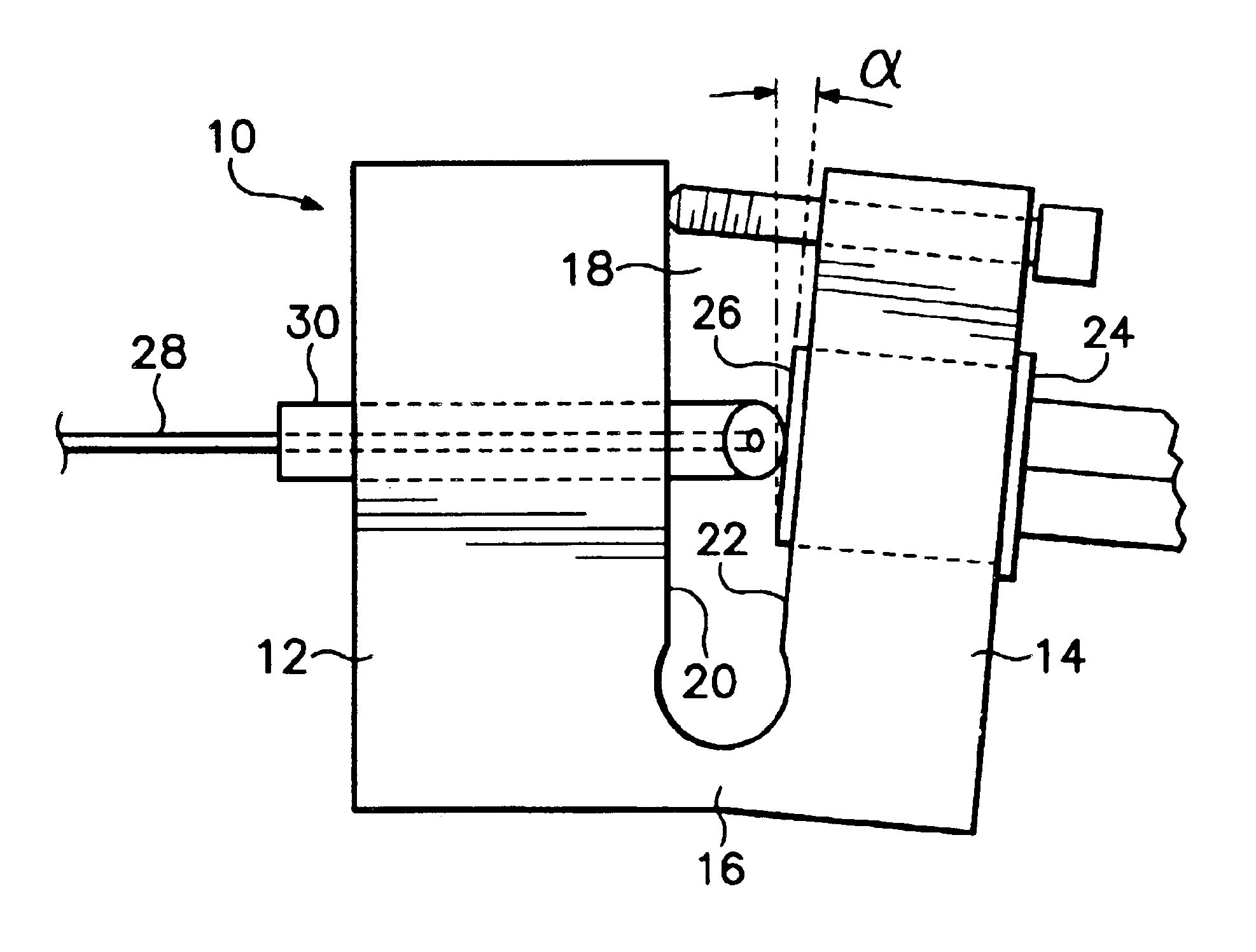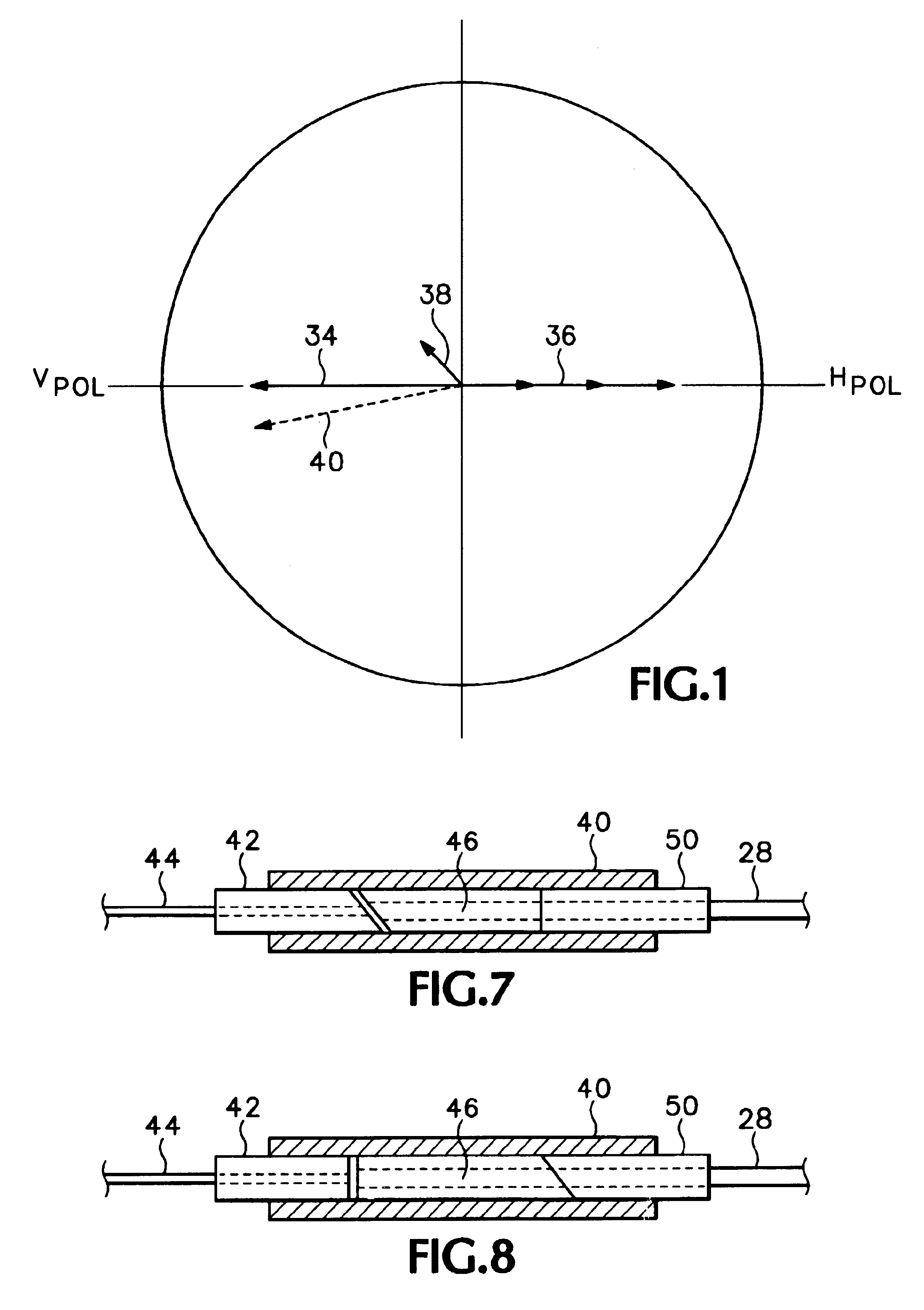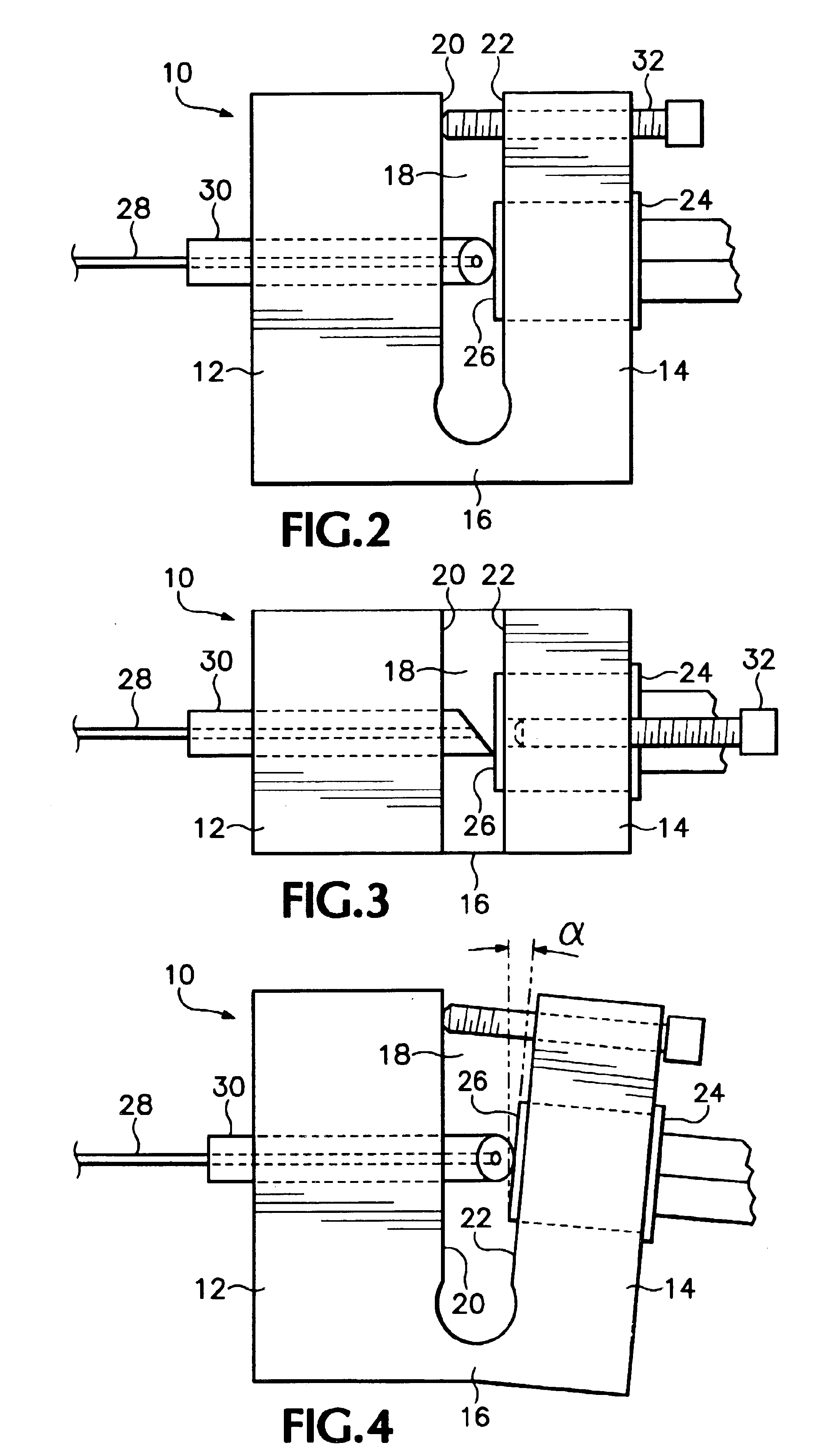Fiber-pigtailed assembly
a fiber-pigtail and assembly technology, applied in the field of fiber-pigtail assembly, can solve the problems of difficult or impossible to find a company that can or will build such a device for the limited t&m market, and the difficulty of achieving low back reflection and low pdr simultaneously
- Summary
- Abstract
- Description
- Claims
- Application Information
AI Technical Summary
Benefits of technology
Problems solved by technology
Method used
Image
Examples
Embodiment Construction
[0023]As discussed above, merely butting a flat end of a fiber pigtail to a detection surface of an optical detector results in reflection from the flat end that is fed back to an optical source, resulting in unwanted modulation of the optical source. Also the additional reflection from the other end of the fiber pigtail which is coupled to an external optical fiber sets up a birefringent cavity which is polarization dependent, i.e., introduces polarization-dependent loss (PDL) in the fiber pigtail. Therefore to reduce back reflections the end of the fiber pigtail adjacent to the detection surface is beveled. However this introduces a fixed amount of PDL into the optical detector. This may be represented as a fixed vector 34 as shown in FIG. 1. Tilting the detector surface approximately orthogonal to the plane of the bevel of the fiber pigtail introduces a variable magnitude PDL as a function of the tilt angle in the opposite direction, as shown by the variable vector 36. There may ...
PUM
 Login to View More
Login to View More Abstract
Description
Claims
Application Information
 Login to View More
Login to View More - R&D
- Intellectual Property
- Life Sciences
- Materials
- Tech Scout
- Unparalleled Data Quality
- Higher Quality Content
- 60% Fewer Hallucinations
Browse by: Latest US Patents, China's latest patents, Technical Efficacy Thesaurus, Application Domain, Technology Topic, Popular Technical Reports.
© 2025 PatSnap. All rights reserved.Legal|Privacy policy|Modern Slavery Act Transparency Statement|Sitemap|About US| Contact US: help@patsnap.com



